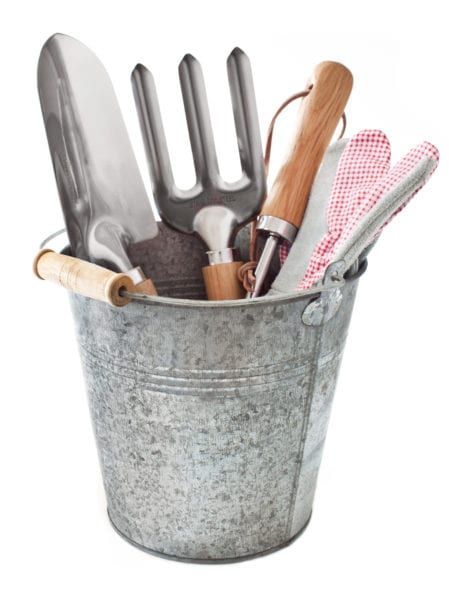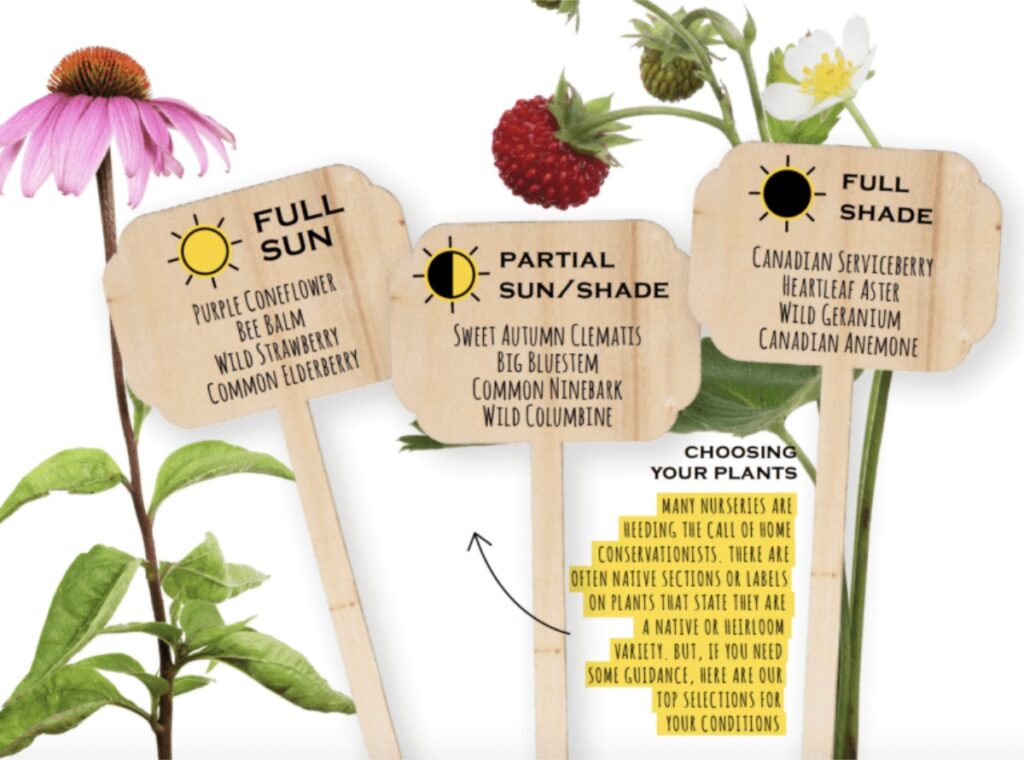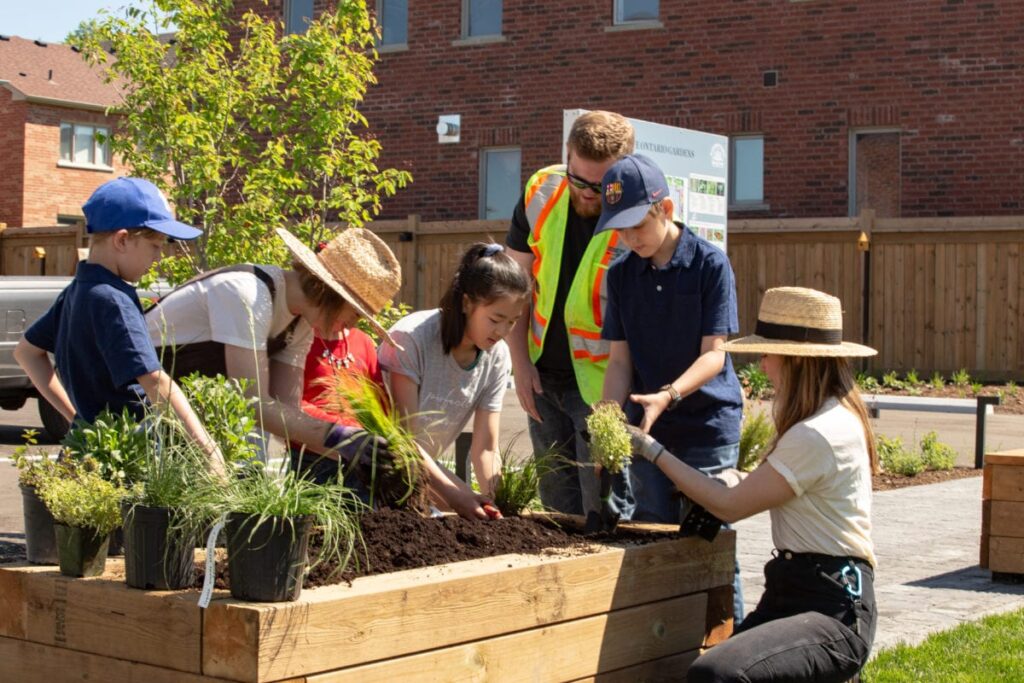
Add your address to the urban pollinator highway
By Courtney-Anne Craft & Amber Stafford
The ethics of conservation include protecting species from extinction, maintaining and restoring habitat, and encouraging biodiversity. Of course, many of us equate conservation with large, naturalized areas of land, that have been sectioned off and protected from human population. While, the forests, ravines, meadows, and swamps of provincial parks are indeed valuable ecological sites for animal and insect life to exist in a delicate balance, urban areas are not ecological vacuums. As an urban dweller, you too can play a role in conservation. From studio apartment to expansive estate, private property can contribute to conservation efforts simply by making pollinator-friendly plants a part of your personal, outdoor space.
The need is more important now than ever. In Canada, insect populations have declined 45 per cent in the past 30 years, while North American bird populations have declined by 5 billion in the same timeframe. Beyond their intangibles, birds and insects, like bees, moths, and butterflies, are responsible for the pollination of plants that produce fruits, vegetables, nuts, oils, fibers, and many raw materials that humans rely on for food and industry. Fortunately, in an urban area like Toronto, where private property dominates the landscape, conservation can be brought home – quite literally. This summer, city dwellers can easily become stay-at-home conservationists by creating gardens and making simple changes in plant selection.

‘Home sweet home’ comes in many forms: from condos apartments and soaring penthouses in the sky, to row, semi or detached housing and even grand estates. Regardless of which is closest to your reality, making a valuable contribution to conservation depends less on the amount of space you have, and more on what plants you choose to grow there. Yes, your balcony, your shared front garden, your backyard, and even your concrete pad hold ecological significance. Outdoor living spaces of all varieties have the potential to increase biodiversity and enhance the local ecosystem.
If you are just developing your green thumb, you’ll find that successful garden making is a matter of keen observation. Let’s start with light. What direction does your soon-to-be oasis face? South-facing spots will get more sun than North-facing, always! East-facing spots will get delicate morning sun, while those West-facing will receive some blazing hot, end of day sun. Once you’ve oriented yourself, consider the factors that obstruct light…a canopy of trees provides dappled or deep shade, a nearby building makes dense shade. Be proactive and keep a log of the light conditions specific to your slice of the pie.
Now that you’ve looked up, look down. Soil is an important factor in a garden’s success. And, believe it or not, terrace and balcony owners have an advantage here…they can create the perfect soil for each plant in the very pot in which it will thrive. Follow the needs of the plants you select to customize a potting mix with ingredients like compost, coconut coir, sand, shredded bark, vermiculite. Here is a basic potting mix recipe:
litre of coconut coir
½ litre of perlite
½ litre of vermiculite
½ litre of composted manure or mushroom compost
2 cups of fine sand
½ cup of lime

As a bonus, making potting mix from scratch is a great activity to do with kids. Science aside, it stresses the importance of strong foundations, can be useful for teaching fractions, and is endlessly fun when you dig your hands and start mixing!
Where we cannot widely manage the conditions of the soil we have, it is at the very least, important to know its composition. To do this, wet your soil until it is slightly damp, grab a handful and squeeze. Does it stay in a lump? If so, you’ve got dense soil, likely with some amount of clay. Does it break apart into small particulates? Well, then You have dry soil. Does it lump together but is easily broken into small parts? This is a well-balanced soil. Please don’t worry, you can work with any of these conditions!
You’ve now committed to convert a percentage of your outdoor space to gardens, you’ve noted the light and soil conditions, and you’ve got our hands dirty. It’s time to journey to the nursery to get some ‘green goodness.’ Before you descend upon the aisles of dazzling blooms, complete with rows of pink calling out to be picked, florets of blue flirting their way into your cart, soft yellow clusters catching your eye – it’s important to stay focused on the productive and native plants. These are plants that have evolved in partnership with birds and insects, creating a symbiotic relationship in which everyone gives and everyone gets. Fortunately, these plants are gorgeous and are often easier to grow. Take a pass on the heavily hybridized ornamental plants. These designer specimens are grown strictly for aesthetics at the expense of ecological productivity, producing little to no pollen.
Many nurseries are heeding the call of home conservationists. There are often native sections or labels on plants that state they are a native or heirloom variety. But, if you need some guidance, here are our top selections for your conditions:
Full Sun: Purple Coneflower, Bee Balm, Wild Strawberry, Common Elderberry
Part Sun/Shade: Sweet Autumn Clematis, Big Bluestem, Common Ninebark, Wild Columbine
Full Shade: Canadian Serviceberry, Heartleaf Aster, Wild Geranium, Canadian Anemone

Consciously chosen plants are not only aesthetically pleasing and suit their placement in the garden, they support the hundreds of insects and birds in constant search for forage and shelter. This is why your plant choices matter and why adopting a new perspective on how plants can serve a greater calling, only enriches the beauty they possess. A flower is not just a flower when it becomes a feast for native bees, or when its seed heads become a buffet for migratory songbirds. Choosing wisely, braids together our human desire for beauty with the earthly dance of survival.
In addition to plants, you can also add a bee house, a birdhouse, a small bird bath, or a trellis as a windbreak to create shelter. This will help birds and insects add your address to their journey along an urban pollinator highway. Like wayfaring friends, they will return year after year to rest and forage. And, building structures for our winged neighbours not only supports their livelihood, it makes for a great family-friendly activity. Have you ever seen a Carolina Wren with its lovely rusted feathers? The Toronto area has a small population of these non-migratory birds. Their house requires an opening of 2 ½ inches high and 5 inches wide, a box that is 7 inches tall and 6 inches wide, and it must be 3 to 6 feet from the ground, secured to the side of a structure. They will nest here in the summer and may roost here over winter.

With at-home efforts that invite nature into your urban dwellings through the introduction of gardens with well selected plants, you are making a valuable contribution to supporting biodiversity. Your role as a guardian gardener can begin at any moment, in any space, of any size. Just be sure to partner with trustworthy resources that inspire, encourage, and empower you. Have you ever seen a Hawk Moth? A Cape May Warbler? A Tricoloured Bumble Bee? You soon will, when your property becomes an exquisite site of conservation.
_______________
Courtney-Anne Craft and Amber Stafford are founders of Garden Party, focusing on creating perennial gardens that use productive native species that support pollinators, and contributing to the beauty of the city through creating healthy, sustainable gardens. www.gardenpartyto.com
For additional information, visit these sources:

